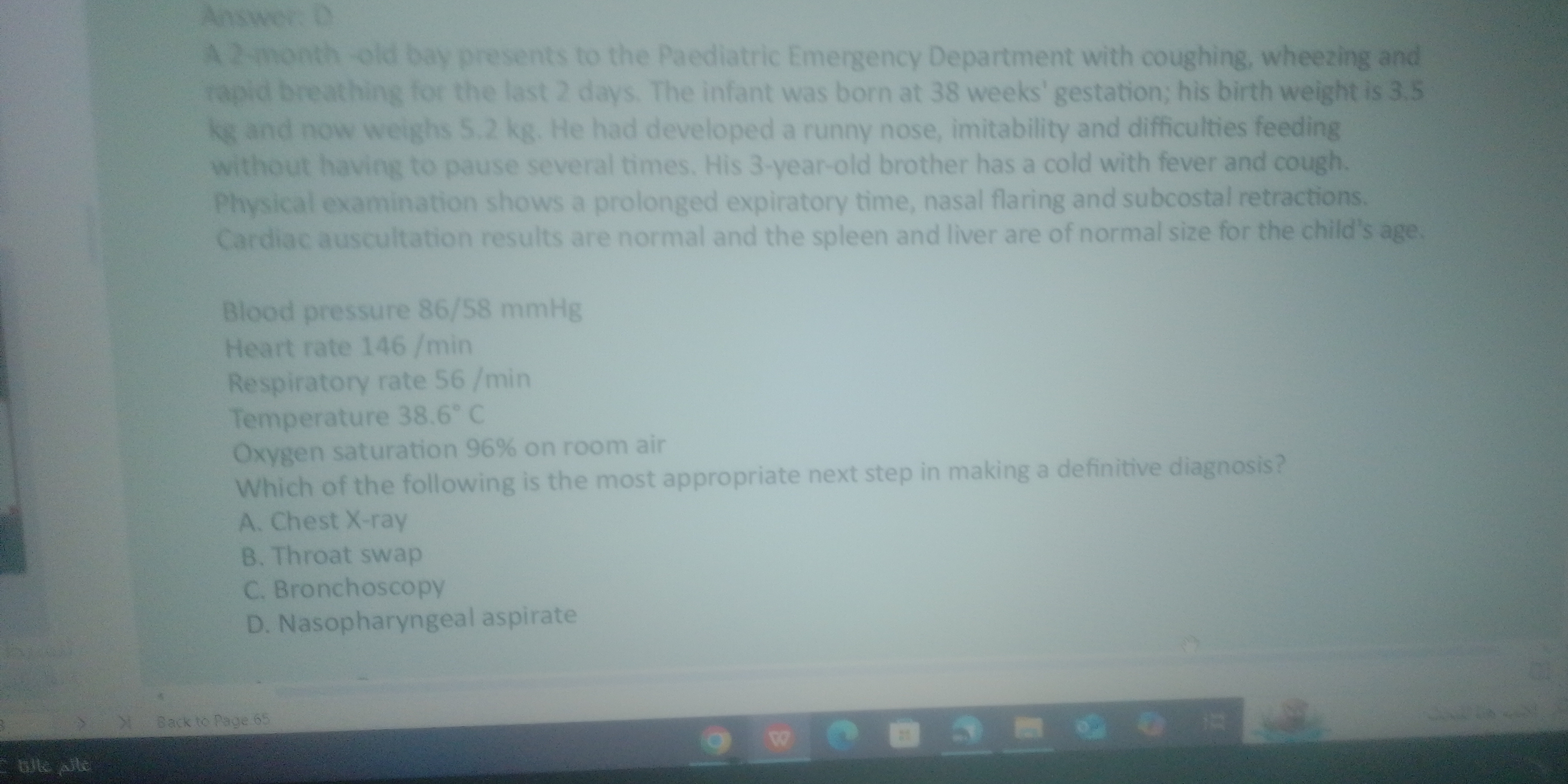Which of the following is the most appropriate next step in making a definitive diagnosis? A. Chest X-ray B. Throat swap C. Bronchoscopy D. Nasopharyngeal aspirate

Understand the Problem
This question is a medical question that is asking us to determine the next step in a diagnosis given the symptoms of a 2-month old baby who presents to the Paediatric Emergency Department with coughing, and wheezing.
Answer
D. Nasopharyngeal aspirate
The most appropriate next step in making a definitive diagnosis is D. Nasopharyngeal aspirate
Answer for screen readers
The most appropriate next step in making a definitive diagnosis is D. Nasopharyngeal aspirate
More Information
Given the patient's symptoms (coughing, wheezing, rapid breathing, runny nose) and the positive history of a sibling with similar cold symptoms, a viral respiratory infection is suspected. A nasopharyngeal aspirate is the preferred method for detecting common respiratory viruses such as RSV, influenza, adenovirus, and parainfluenza viruses. While a chest X-ray (choice A) might be considered, it is most useful for confirming pneumonia, which is not clearly indicated in this case. A throat swab (choice B) is more appropriate for diagnosing bacterial infections like streptococcal pharyngitis, which is less likely given the patient's age and symptoms. Bronchoscopy (choice C) is an invasive procedure generally reserved for more severe or unusual cases.
Tips
When answering a question about the 'next step' you must consider the least invasive and most likely diagnosis.
Sources
- Diagnostic techniques for critical respiratory infections - pmc.ncbi.nlm.nih.gov
- [PDF] A. Pre-Procedure Clinic (PPC) Testing - bmc.org
AI-generated content may contain errors. Please verify critical information